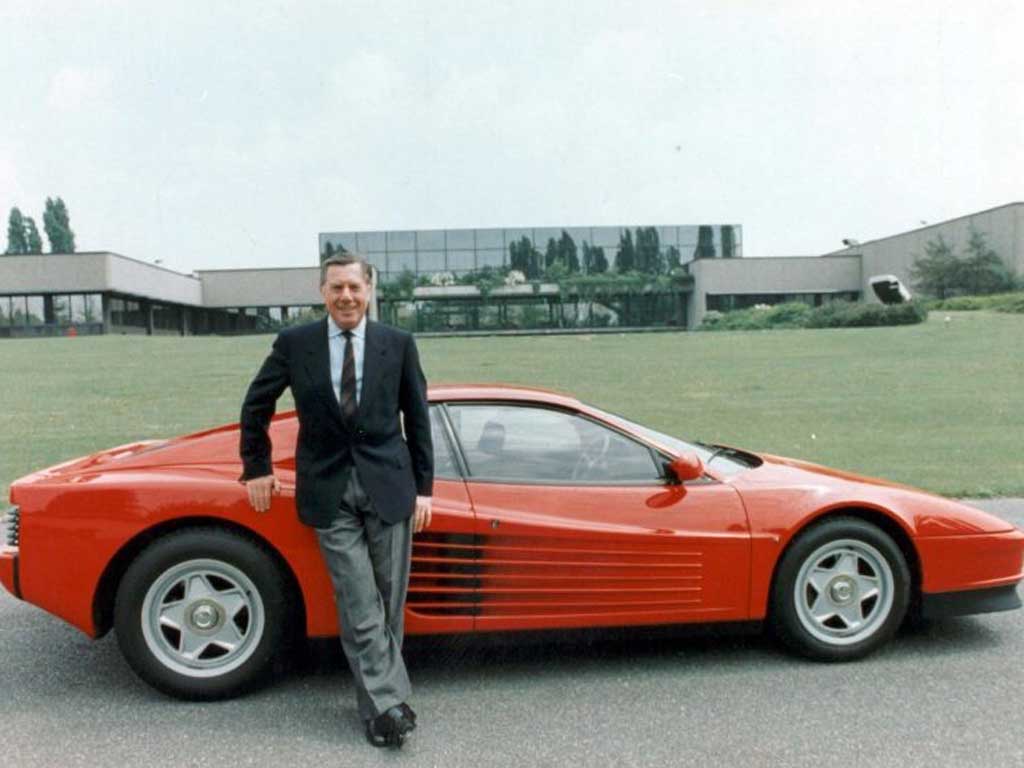Sergio Pininfarina: Car designer hailed for his classic Ferrari marques

Your support helps us to tell the story
From reproductive rights to climate change to Big Tech, The Independent is on the ground when the story is developing. Whether it's investigating the financials of Elon Musk's pro-Trump PAC or producing our latest documentary, 'The A Word', which shines a light on the American women fighting for reproductive rights, we know how important it is to parse out the facts from the messaging.
At such a critical moment in US history, we need reporters on the ground. Your donation allows us to keep sending journalists to speak to both sides of the story.
The Independent is trusted by Americans across the entire political spectrum. And unlike many other quality news outlets, we choose not to lock Americans out of our reporting and analysis with paywalls. We believe quality journalism should be available to everyone, paid for by those who can afford it.
Your support makes all the difference.The name of Pininfarina is indelibly associated with the Ferrari supercar marque. The design house, which was led by Sergio Pininfarina for 40 years, created many legendary Ferrari designs, including the 250 GT Coupé (1958), the Daytona (1968) and the Testarossa (1984). His personal favourite was the 1965 Dino Berlinetta Speciale, the last model on which he worked with his father.
Pininfarina was born Sergio Farina in Turin in 1926. His father, Battista, founded Carrozzeria Pinin Farina, an automotive coachbuilder, in 1930. The son joined the company at the age of 20 after graduating from Turin Polytechnic with a degree in mechanical engineering.
The company's connection with Ferrari began five years later. Recalling the first meeting, which he set up between his father and Enzo Ferrari, Sergio said, "I remember that we met in a restaurant and had lunch and immediately the two great men had a great sympathy and feeling for each other. They both wished to start this co-operation... My father had the feeling Ferrari was a new, young firm that would become representative of the Italian industry, especially in the sporting field."
The first model to result from the partnership was a cabriolet built on a Ferrari chassis, the 212 Inter Cabriolet. It was exhibited at motor shows in Turin and Paris, where the display car was bought on sight by the Italian film director Roberto Rossellini. Maurice Gatsonides (Independent obituary, 22 December 1998), who drove the car in the 1000km Nürburgring race, said "I was to have the most magnificent car of the whole field, as this Ferrari was bodied by Pininfarina and carried a four-seat drophead coupé with graceful lines, a sure winner at any Concours d'Elegance".
Pininfarina was soon managing the relationships with motor manufacturers, and design contracts for Maserati, Alfa Romeo and Peugeot quickly followed. In 1955 Prince Philip visited the British Motor Corporation headquarters and was shown the latest models by the company's then chairman Sir Leonard Lord. Sensing that the Prince was unimpressed by the designs, Lord called in Pininfarina for help and inspiration. The result was a range of cars including the Austin A40, Austin 1100 and MG MGB.
In 1961 Pininfarina was made managing director, and when his father died half a decade later it was a logical step for him to take over the chairmanship, going on to lead the company for the next 40 years.
Recognising the importance of aerodynamics for speed and fuel efficiency, Pininfarina built the first wind tunnel in Italy in 1972, one of the first in the world to be used for car design. His techniques continue to be used today by the company for the design of innovative models including the recently announced Nido EV electric prototype.
Projects in the 1990s and the early part of this century included vehicles such as the Peugeot 406 Coupé (1997) and Hyundai Matrix (2001). Auto Express said of the 406 Coupé: "Like finding a designer suit on the shelves at your local supermarket, the Pininfarina-styled Peugeot 406 Coupé set new standards for family car makers... Rumour has it the model was originally pencilled as part of a bid to tempt Ferrari into the cut-price supercar market. But when the designs failed to sell, the stylists passed them to Peugeot."
In 2006 Pininfarina handed over to his eldest son, Andrea. When he died in a scooter accident two years later, control went to the younger son, Paolo. Pininfarina had moved into manufacturing for companies such as Mitsubishi and at its peak was able to produce some 50,000 vehicles per year. However, the company had grown too quickly, resulting in debts of 600 million euros. Following restructuring in 2009, the firm now once again concentrates on its design activities.
Pininfarina was head of the Italian business organisation, Confindustria, from 1988 to 1992 and became a senator for life in 2005. Among many awards, he received the Premio Leonardo in 1999 from the Italian president Oscar Luigi Scalfaro, the Palme d'Or at the Festival Automobile International (2005) and the Prix Européen de Design Automobile (2006).
Luca di Montezemolo, chairman of Ferrari, said: "Calling his relation with Ferrari legendary is insufficient. First with Enzo and then with me, he designed some of the most iconic models, such as the Testarossa or the Enzo, just to name two." Pininfarina, he added, "connected his name indissolubly with our history and our success. Sergio was one of the most important advocates of 'Made in Italy' all over the world, a man who gave Italy credibility and splendor."
Sergio Farina (Sergio Pininfarina), car designer: born Turin 8 September 1926; married 1951 Giorgia Gianolio (one daughter, one son, and one son deceased); died Turin 3 July 2012.
Join our commenting forum
Join thought-provoking conversations, follow other Independent readers and see their replies
Comments